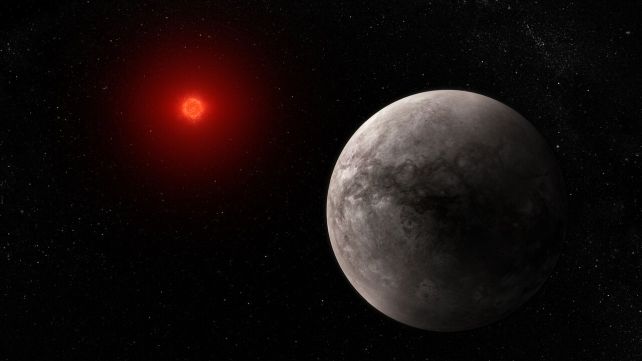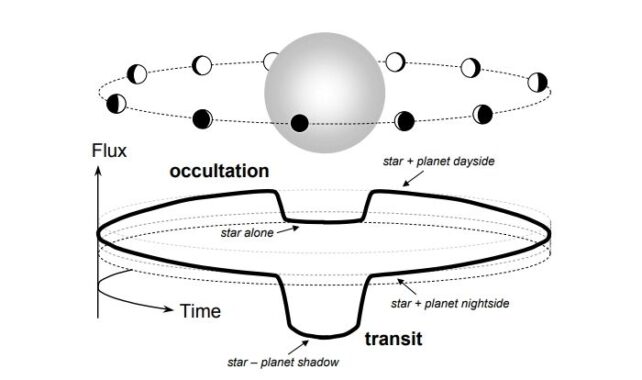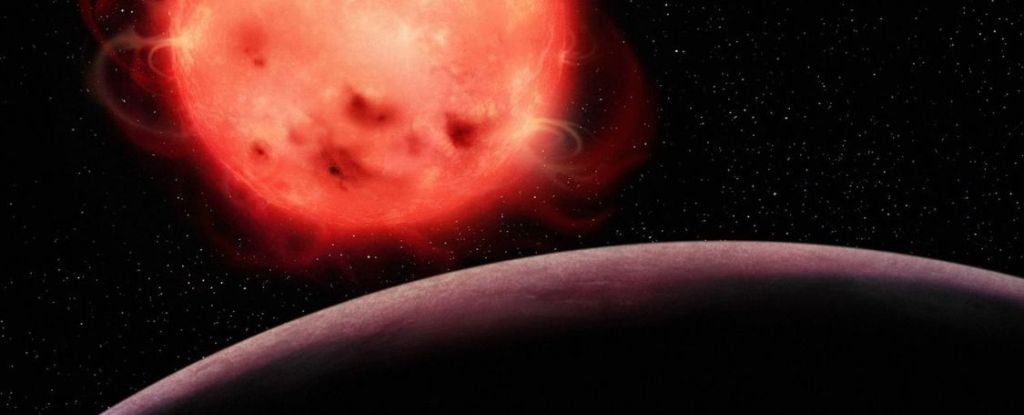Products You May Like
Earlier this year, the James Webb Space Telescope dashed hopes for life on one of the most Earth-like exoplanets discovered in the Milky Way.
TRAPPIST-1b, a world 1.4 times the mass and 1.1 times the radius of Earth, just 40 light-years away, has no detectable atmosphere to protect it from the scorching radiation of its host star.
That finding, made using mid-infrared photometric observations, wasn’t an unexpected one, however; the research was more about making a close study of a smaller, rocky world at cooler temperatures than we usually do.
Now, new JWST near-infrared spectroscopic observations are in – and they suggest that the behavior of the exoplanet’s host star may be interfering with our ability to make accurate measurements of that exoplanet.
TRAPPIST-1b is still uninhabitable to life as we know it, mind you. But the discovery, led by astronomer Olivia Lim of the University of Montreal, suggests that stellar contamination could produce false detections of molecules that aren’t related to the exoplanet.

“Our observations did not see signs of an atmosphere around TRAPPIST-1 b. This tells us the planet could be a bare rock, have clouds high in the atmosphere or have a very heavy molecule like carbon dioxide that makes the atmosphere too small to detect,” says astrophysicist Ryan MacDonald of the University of Michigan.
“But what we do see is that the star is absolutely the biggest effect dominating our observations, and this will do the exact same thing to other planets in the system.”
The problem is that stars don’t just sit there with uniform brightness all the time. Starspots can cause dimming; faculae are spots of brightness. And these variations in a star’s brightness can have an impact on spectroscopic observations of exoplanet atmospheres.
Such observations are taken when an exoplanet transits between us and its host star. This causes the star’s light to dim minutely; but some starlight passes through the exoplanet’s atmosphere around the rim of the planetary disk.
Scientists can look for changes in the spectrum of light when the exoplanet transits, and use those changes to hunt for the signatures of molecules absorbing and re-emitting specific wavelengths of light.
If the star’s light never changed, it would be pretty easy. But the researchers found that stellar activity can heavily contaminate the spectroscopic observations.
“In addition to the contamination from stellar spots and faculae, we saw a stellar flare, an unpredictable event during which the star looks brighter for several minutes or hours,” Lim says.
“This flare affected our measurement of the amount of light blocked by the planet. Such signatures of stellar activity are difficult to model but we need to account for them to ensure that we interpret the data correctly.”

The team modeled the stellar contamination, then conducted two analyses of the data: the first with the stellar contamination removed, the second with it left intact. Both results looked pretty similar; that is, the spectrum with TRAPPIST-1b was more or less the same as the spectrum without.
This was confirmation of the earlier mid-infrared photometric results that showed the exoplanet didn’t have an atmosphere. But the team’s work also showed the importance of taking stellar contamination into account, before analyzing the data.
This is a good thing to have figured out now. The TRAPPIST-1 system has seven exoplanets, three of which are in the star’s habitable zone – at a nice, temperate distance that’s neither too hot nor too cold for life as we know it. JWST is yet to look at these habitable zone worlds, but now that we know stellar contamination could skew the results, scientists can take that into account.
“Given the lack of stellar model fidelity,” the researchers conclude, “additional theoretical work and/or observations of the host star are necessary to provide better constraints on the contribution of stellar contamination to future transmission spectra.”
The research has been published in The Astrophysical Journal Letters.
